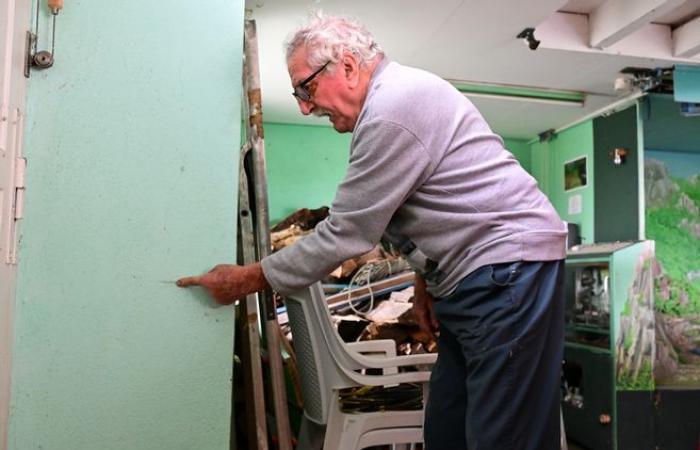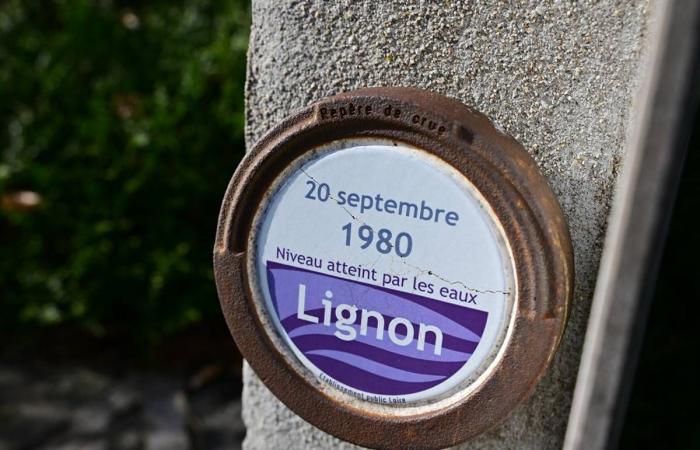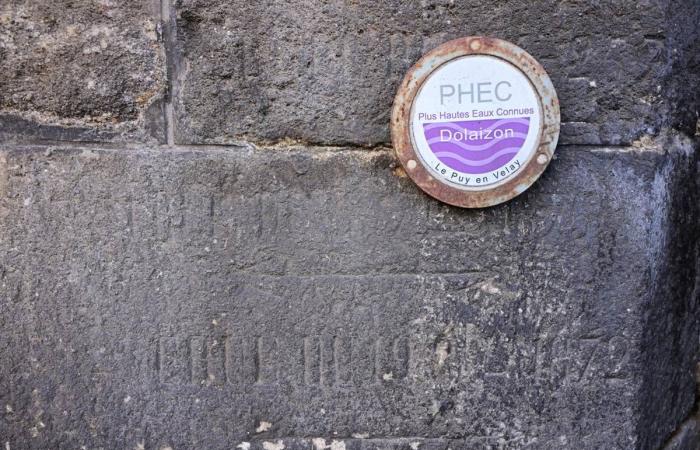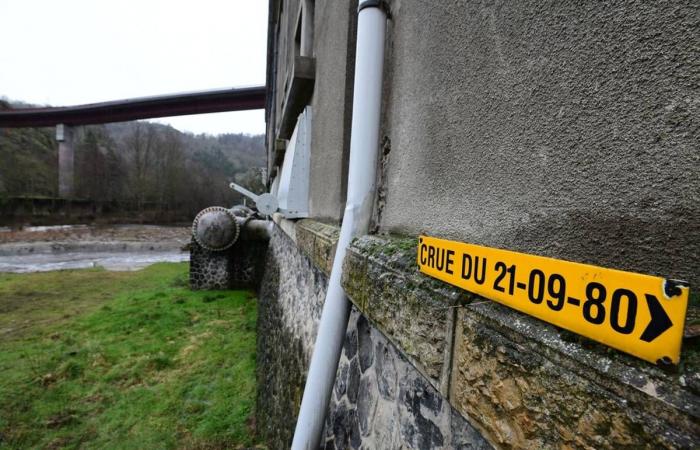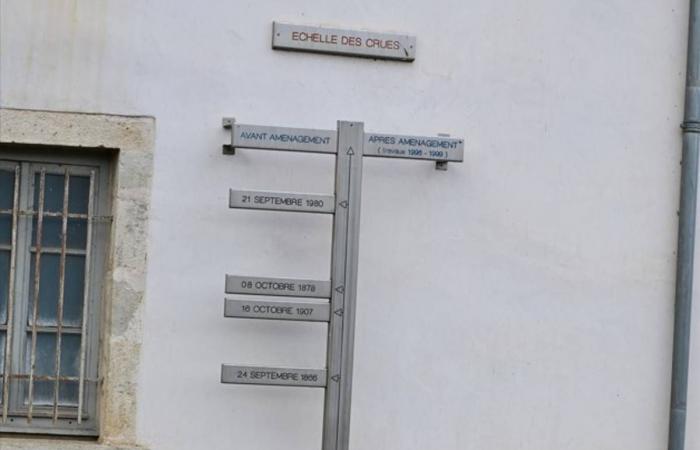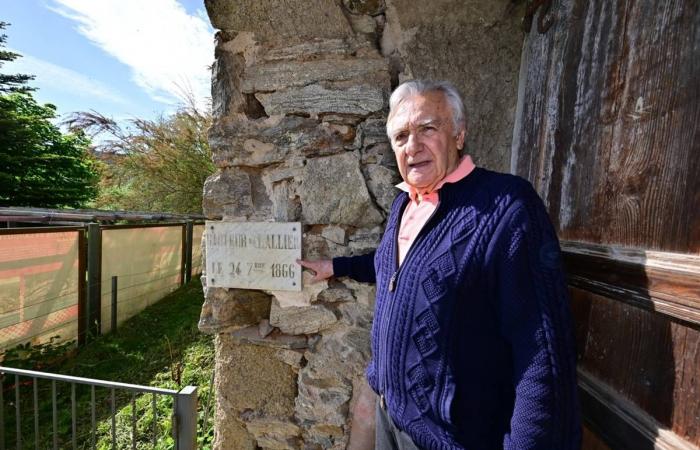Each time there is a major flood, the maximum level reached is marked, called a flood mark. A simple and indelible way to remember how far water can reach. After the floods of October 17 in Haute-Loire, new markers will be added on the Loire and the Lignon. Other more modest rivers would also deserve it. This significant flood highlights the role of these benchmarks.
“The water has risen up here, it can go back that way…”. Here is the inscription that can be read on a sign posted next to a flood mark on the edge of the Lignon. A few lines to remind you that a flood mark is “a witness to past floods. These marks indicate the level reached during a flood. The information provided must be preserved to maintain collective memory and transmit knowledge of the risk.”A flood mark had been painted on this window lintel of a house in Peyredeyre on the banks of the Loire. Since then, the stone has been reused and no longer corresponds to the level of a flood. The writing reflects a flood at the end of the 19th or beginning of the 20th century.
A simple definition that sums up their role well. Because after each flood, we clean, we repair, the trees grow back on the banks of the watercourses and as the scars fade, we end up slowly forgetting that the water level can also rise again. high, and more… Hence the importance of leaving a mark, an indelible mark on a support visible for several centuries.
160 years of flood markers in Brives
In Brives-Charensac, there are two flood scales (one on each bank of the river) which provide several references to floods for nearly 160 years. “There are no new benchmarks installed for 2024 yet, but there will be some,” explains Jean-Paul Bringer, first deputy mayor of Brives-Charensac. The DDT (Departmental Directorate of Territories) came to make markers from the “flood marks”, the traces left by the water level. » On the Charensac dike, transferred to the Puy-en-Velay urban community this year, a ladder was also installed. “The DDT set up a millimeter scale on the dike and they asked us to clearly identify the level of the flood of October 17,” continues the elected official. So many benchmarks, in a commune that has been affected many times, which will make it possible to analyze the impact of developments such as the immense construction site of the Loire Grandeur Nature plan in the bed of the Loire between 1996 and 1999. Moreover, the two scales Brives floods take into account flooding “before works” and after.Flood marker at the Moulin du Mas Boyer in Mazet-Saint-Voy. This year, the Lignon rose 20 cm lower.
The marker (sometimes engraved on a stone of a bridge, a screwed plaque, etc.) is the most effective way to remember that what has already happened can especially happen again. After the reference flood of September 21, 1980, only those of 2003 (to a lesser extent) and especially 2008, had left their mark. We will now have to reckon with 2024. These flood benchmarks allow us to better understand how and why the peaks are reached. On the Loire, the levels were very variable on October 17.
The day after the floods, we indicated that this flood of the Loire was the strongest since 2008. A few days later, this observation is both true and false… In Brives-Charensac and Goudet, the water level was much higher than that of the flood of November 2, 2008. The water rose in Brives 50 cm higher than 16 years ago! But immediately afterwards, as in Chadrac or Peyredeyre, the level is very slightly lower than 2008, as everywhere downstream. Such an observation therefore deserves some explanation. “In 2008, it rained a lot on the Borne and the Dolaizon which were in major flood and flow into the Loire just downstream of the Chartreuse,” explains Jean-Paul Bringer. Last October 17 this was not the case: these two rivers had not grown much. This time, the water came from above, from the Loire upstream with torrential rains in Ardèche, while here, there was not a drop of rain until three in the morning. »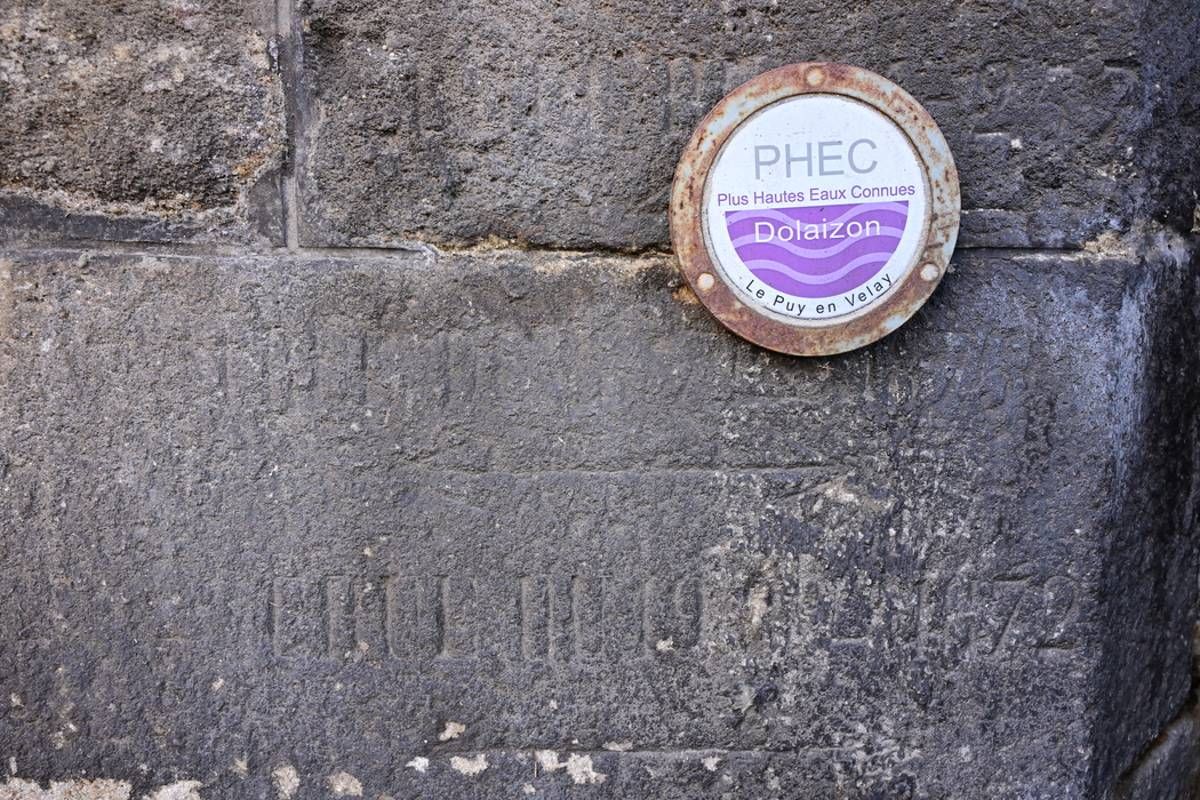 A flood marker placed on the Baccarat bridge in Puy-en-Velay indicates the highest known flood in Dolaizon. Not all dates engraved in stone are legible. One of them corresponds to a flood of 1872. Photo LC
A flood marker placed on the Baccarat bridge in Puy-en-Velay indicates the highest known flood in Dolaizon. Not all dates engraved in stone are legible. One of them corresponds to a flood of 1872. Photo LC
Even in Bas-en-Basset, the Loire was at a lower level in 2024 compared to 2008 and did not cause major damage. Here again, the flood peak of its main tributary, the Lignon, had already passed three hours ago when the Loire reached its highest level at the Bas-en-Basset bridge. All new flood markers installed in the months or years to come will therefore be valuable in continuing to draw lessons from these episodes. But before that, we must first keep a small visible trace, even a simple line of paint, of the maximum level reached by the water on October 17, 2024.
In Peyredeyre, there is only one flood marker from September 21, 1980 hanging on the railway viaduct, 300 meters after the village. In the middle of the houses, nothing… So a resident (photo above), Jean Gibert, had the wisdom to take a chisel to engrave on the wall of his garage the incredible level reached that day by the Loire. 44 years after the deadly floods of the river, this is an important work of memory which in turn deserves an official marker. 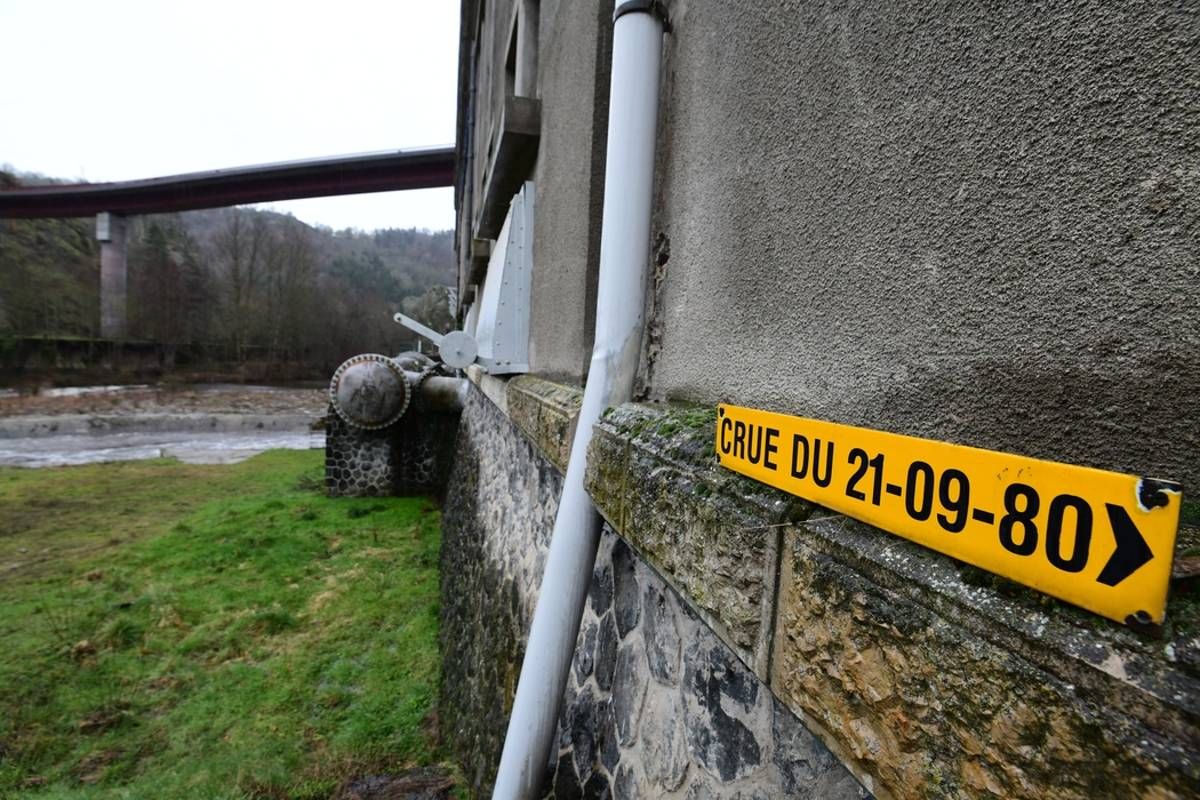 An EDF hydroelectric power station bearing a flood mark: that of Monistrol-d'Allier with here the level reached on September 21, 1980.
An EDF hydroelectric power station bearing a flood mark: that of Monistrol-d'Allier with here the level reached on September 21, 1980.
An official website lists the levels reached
Do you want to know the highest water level recorded near you, or know where the flood marks are located on your favorite fishing spot? Nothing could be simpler, just go to the official website: www.reperesdecrues.developpement-durable.gouv.fr
Thanks to an interactive map, by selecting a perimeter, you will be able to find many landmarks in Haute-Loire and on a large number of rivers, not only on the Loire or the Allier, with their location and photos. You can even make your contribution by adding a missing flood marker with its photo. There is no doubt that new benchmarks will appear in the months and years to come in the most affected sectors in 2024.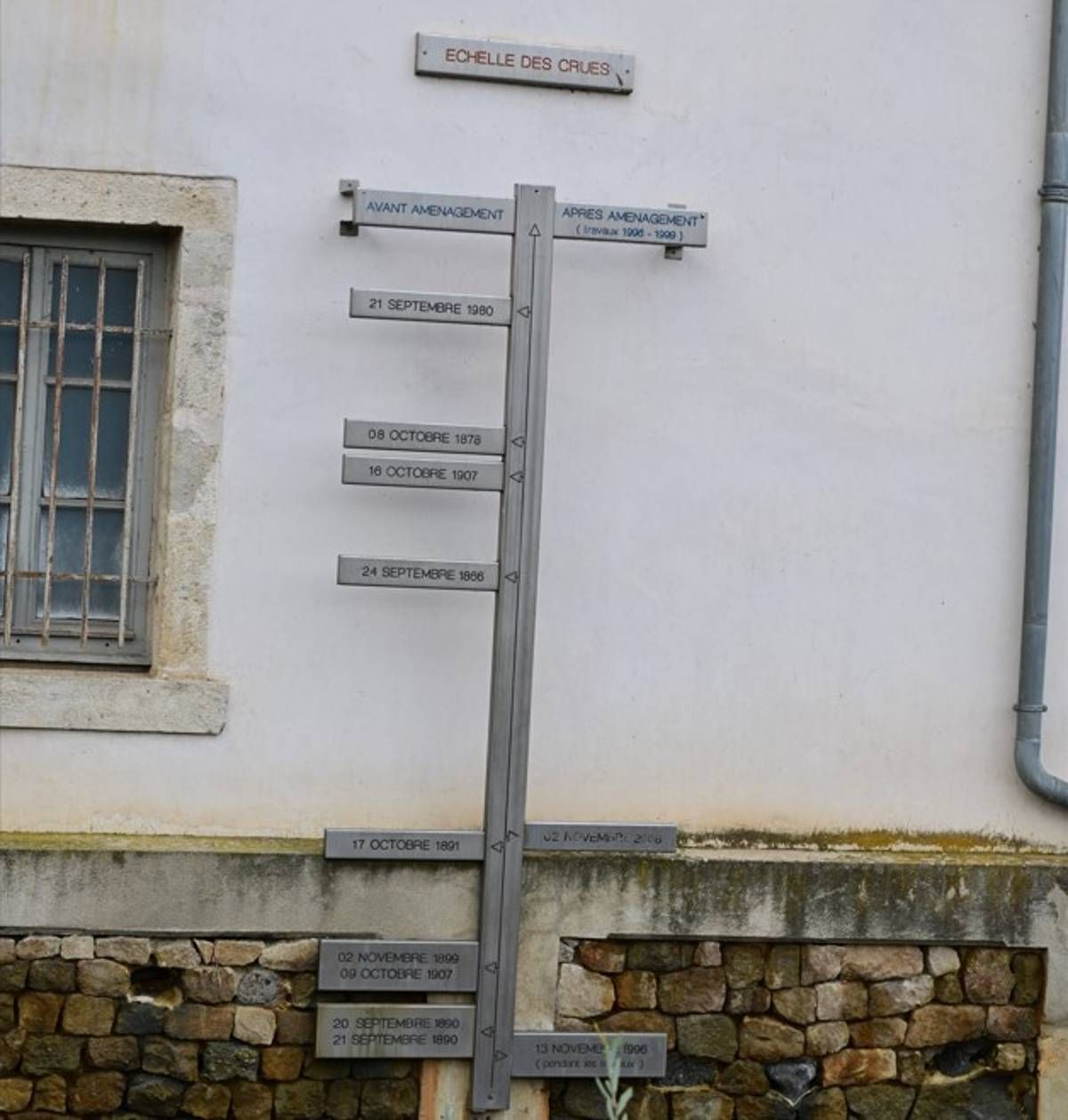 In Brives-Charensac, the former Celle mill, now the media library, houses a flood ladder. It distinguishes the level of the Loire before (left) and after (right) the developments carried out as part of the Loire Grandeur Nature Plan. Only the floods of 1996 and 2008 were listed on the right. It will now be necessary to add that of 2024, approximately 50 cm higher than 2008.
In Brives-Charensac, the former Celle mill, now the media library, houses a flood ladder. It distinguishes the level of the Loire before (left) and after (right) the developments carried out as part of the Loire Grandeur Nature Plan. Only the floods of 1996 and 2008 were listed on the right. It will now be necessary to add that of 2024, approximately 50 cm higher than 2008.
On the Allier, the devastating flood of 1866 is still a reference
In the Priory garden which adjoins the back of the Sainte-Croix basilica of Lavoûte-Chilhac, the small plaque affixed 158 years ago is surprising. It's even a little frightening when you realize that the Allier in flood has completely plunged the Lavoûte-Chilhac peninsula underwater.
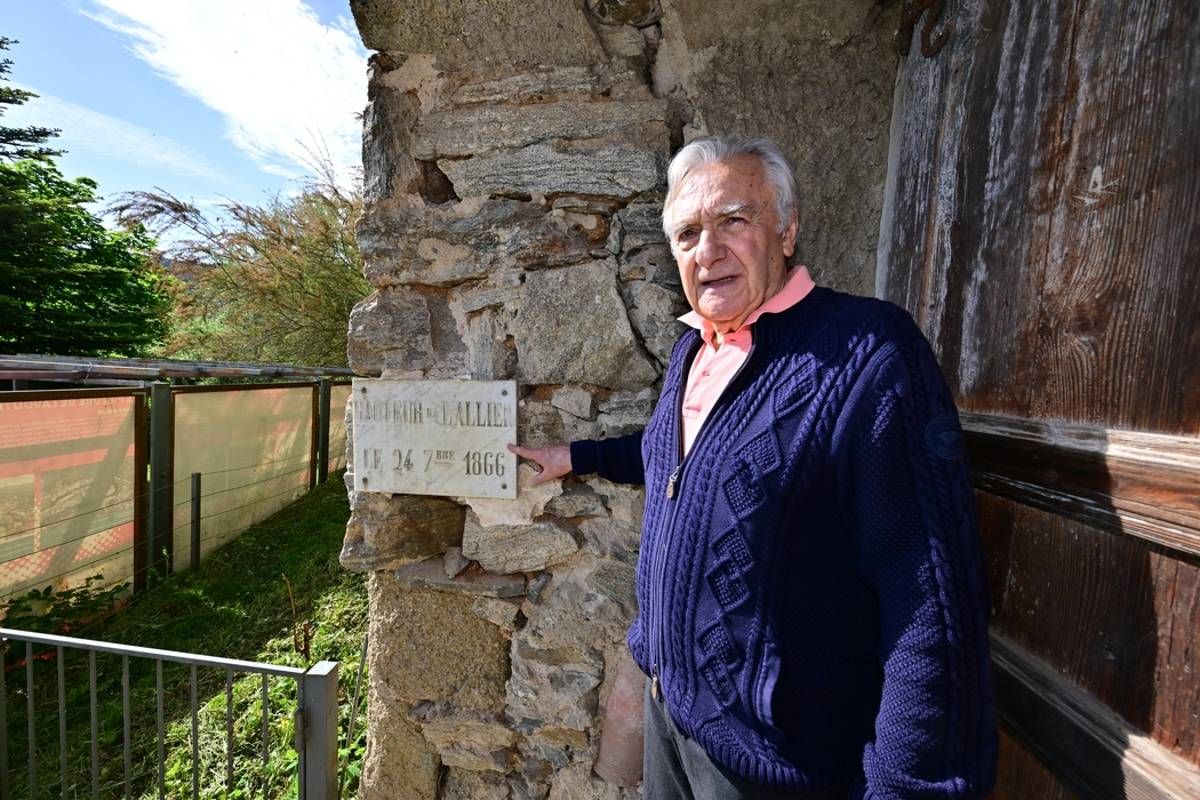 The mayor of Lavoûte-Chilhac, Christian Dauphin, shows the absolutely frightening level reached by the flood of the Allier on September 24, 1866 in the priory garden behind the Sainte-Croix basilica. Photo lionel ciochetto
The mayor of Lavoûte-Chilhac, Christian Dauphin, shows the absolutely frightening level reached by the flood of the Allier on September 24, 1866 in the priory garden behind the Sainte-Croix basilica. Photo lionel ciochetto
Unlike the Loire where the 1980 flood was the most dramatic, on the Allier river in Haute-Loire, the flood of September 24, 1866 serves as a reference. It is a true miracle that no one was killed. The newspaper L'Abeille Brivadoise drew up a frightening report of the desolation along the river following this violent episode. “In Lavoûte-Chilhac, 30 houses were destroyed. Most of the inhabitants are without asylum, without resources and many without clothes,” we can read. “Saint-Julien-des-Chazes offers a heartbreaking spectacle. Twenty houses were swept away or ruined, eight others were seriously damaged. Food, furniture, linen and clothing were taken away. Residents are forced to resort to public charity.”
In Prades, five houses were destroyed by the floods. The story of the 1866 flood in Langeac sends shivers down your spine. “At 6 o'clock in the evening, rescue boats had to be set up to free the residents from rue du Pont de Langeac. At half past 6, the Costet Bridge disappeared with the caretaker's house, and at midnight the Langeac Bridge collapsed in its turn. » At Brioude, the Allier “has almost reached the railway embankment”. A few days later, Napoleon III sent General de Failly to survey the damage. He “became aware of the disasters of Lavoûte-Chilhac. It was only at the sight of the breaches, created by the Allier and the exposed rock, the only vestiges of the inhabitants' homes, that he managed to explain the tremendous flood of September 24.
Lionel Ciochetto

